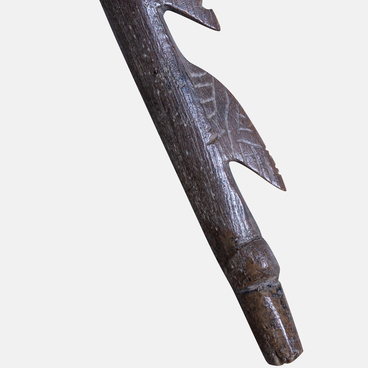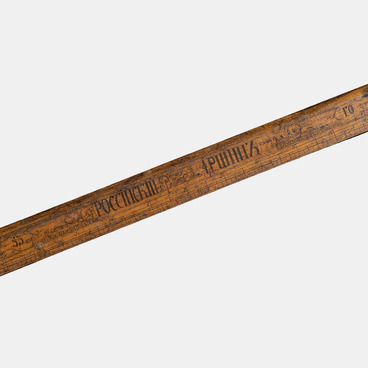The Ulyanovsk Regional Museum of Local Lore named after Ivan Goncharov houses a hand mortar — a firearm that was a successor of hand cannons and was intended for throwing grenades.
It is unclear where this predecessor of modern grenade launchers was first invented. In Russia, hand mortars appeared in the early 18th century, much later than in Europe. They were used to throw grenades — cast-iron balls stuffed with gunpowder or buckshot. Hand mortars were used by infantry, artillery, and cavalry units and by the navy. They were first used in the regular Russian army during the Great Northern War (1700–1721).
Initially, Russia imported hand mortars, but later their production was established at the Tula Arms Plant. The design of hand mortars varied slightly depending on the type of troops which they were intended for. For example, an infantry hand mortar had a regular gun (musket, flintlock rifle) buttstock with a barrel length of no more than 10 centimeters. It was designed for firing a projectile with a weight of two pounds and a diameter of 5 centimeters. It was fired from the shoulder, and the shooter had a special leather pad to absorb the strong recoil. Mounts were often used. Cavalry hand mortars had an elongated buttstock and a square cutout at its end. Infantry caliber projectiles were used. When firing, the buttstock was placed against the saddle. The navy used heavy hand mortars with a caliber of three pounds and a barrel length of six calibers; such mortars also had a cutout on the buttstock and were placed against the deck of the ship before firing.
Hand mortars were used in Europe from the mid-17th century until the early 19th century when the flintlock was replaced by a percussion lock. Experience showed that a gun was of great burden but of little use to bombardiers, who were instead armed with a pistol, a sword, and a battle ax which could be used as a mount for the hand mortar. The fire effectiveness of hand mortars is questionable. The grenades of that period were equipped with a small gunpowder charge, and their propellent and fragmentation effects were weak. This was one of the reasons why hand mortars did not become widespread.


